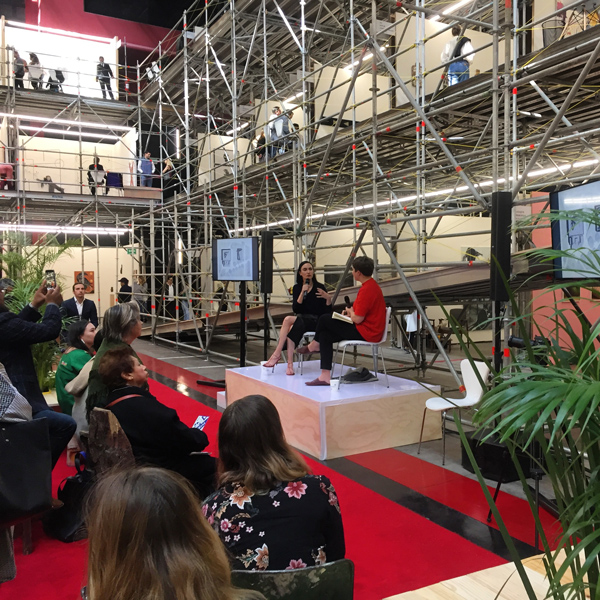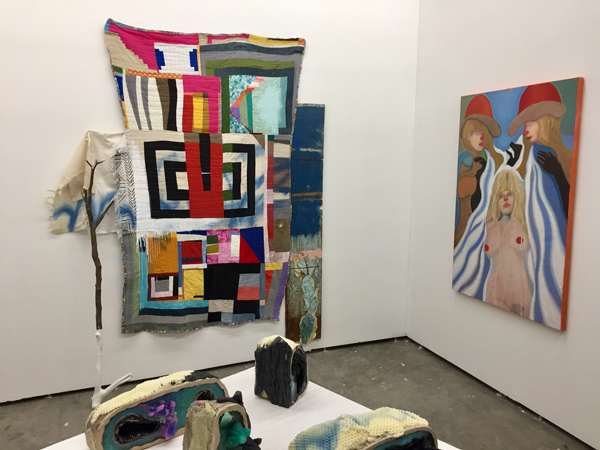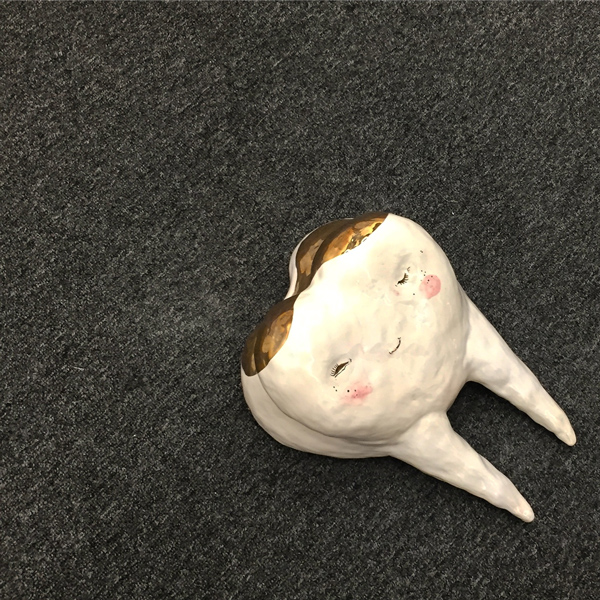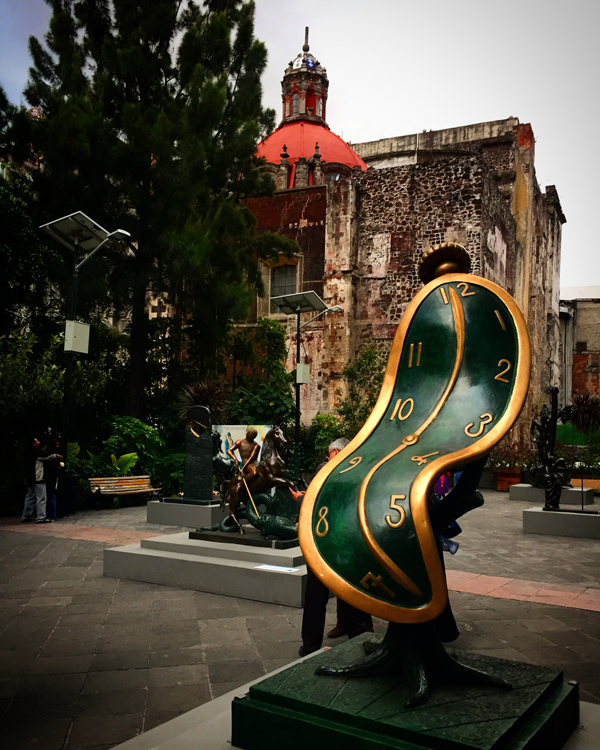It’s starting to rain in Mexico City on Friday afternoon, but Rodrigo Feliz is, in fact, happy. That’s because on the second day of Material Art Fair’s fifth edition, it’s already clearly a triumph. Formerly director of Mexico City’s acclaimed Labor Gallery, Feliz has been with Material from the beginning, for a while doing both jobs but now working full time at Material as director of exhibitor relations. Like so many, this fair is growing—the 2018 edition featured 78 galleries from 33 cities in 18 countries—and his job there is now a year-round proposition.

IMMATERIAL performance event
Part of this is an uptick in exhibitors, as international attention grows and the fair becomes a destination in its own right. Though coinciding with the epic fanciness of Zona Maco, Mexico City’s foremost art fair since 2004, don’t call them a satellite. “We are not a feeder fair,” says Feliz. “In fact quite the opposite! We are a local phenomenon, and this year about 11 exhibitors moved from Zona to Material. They know they won’t get lost here.”

Material art fair talks
Material’s brand is more than an edgy contemporary art fair; it’s also an architecturally-charged, holistic physical and cultural experience. After debuting in a hotel, moving to a concert hall, and spending two years disguising a convention center through the invention of patios, labyrinths and gathering points, this year they collaborated for the third time with the architects of APRDELESP. The firm’s name references “apropiación del espacio” (appropriation of space)—and that’s the Material aesthetic in a nutshell. The fair’s home is now the historic and rather glorious Frontón México, a 1929 Art Deco building disused for 20 years, whose small central footprint, towering ceilings and natural light inspired Material’s innovative three-tier scaffolding design built of wood and metal. All exhibitor booths face inward overlooking a kind of interior courtyard of vernacular furniture and communal space, with no one behind anyone else and no chance of missing a single booth. “We had to build up instead of out,” says Feliz. “We worked on this design for about eight months, and one thing we love about it is the lack of a hierarchy—starting with the erasure of the grid!”

5 Car Garage, Kyla Hansen and Max Maslansky
There was indeed compelling art on display, but this hard-won victory over the soul-crushing grid system was a most refreshing aspect of the experience. Throughout all four days, areas of this open plan were activated with dance/movement performances, exuding the bohemian sass of a production of Rent and a sunny buzz that made it both exhilarating and manageable. As Feliz and team intended, almost all the galleries were on equal footing in size and location—which made it easy to track down the LA contingent.

Ghebaly Gallery, Lila de Magalhaes
A hearty roster of LA-based galleries and a number of LA-based artists showing with galleries from elsewhere, included ltd. los angeles, 5 Car Garage, Gallery Luisotti, Ghebaly Gallery, Jaus, The Pit and in lieu. Portland’s Upfor, San Francisco/NYC’s R/SF Projects, Cologne’s Syndicate and Tokyo’s eitoeiko were among those showing LA-based artists. In response to obligatory inquiries, Feliz demurred on plans for an LA edition, but noted that Los Angeles and Mexico City are sister cities, and that the audience for both fairs clearly included tons of Angelenos, which the whole city seemed to anticipate. LA art writer Andrew Berardini curated with expat independent curator Chris Sharp the intimate but brilliant off-site Lulennial II group show “Low-Hanging Fruit” at Lulu Gallery, while Fundación Jumex had a landmark Baldessari show, and no one dared miss either one.
Photos by Shana Nys Dambrot



















0 Comments